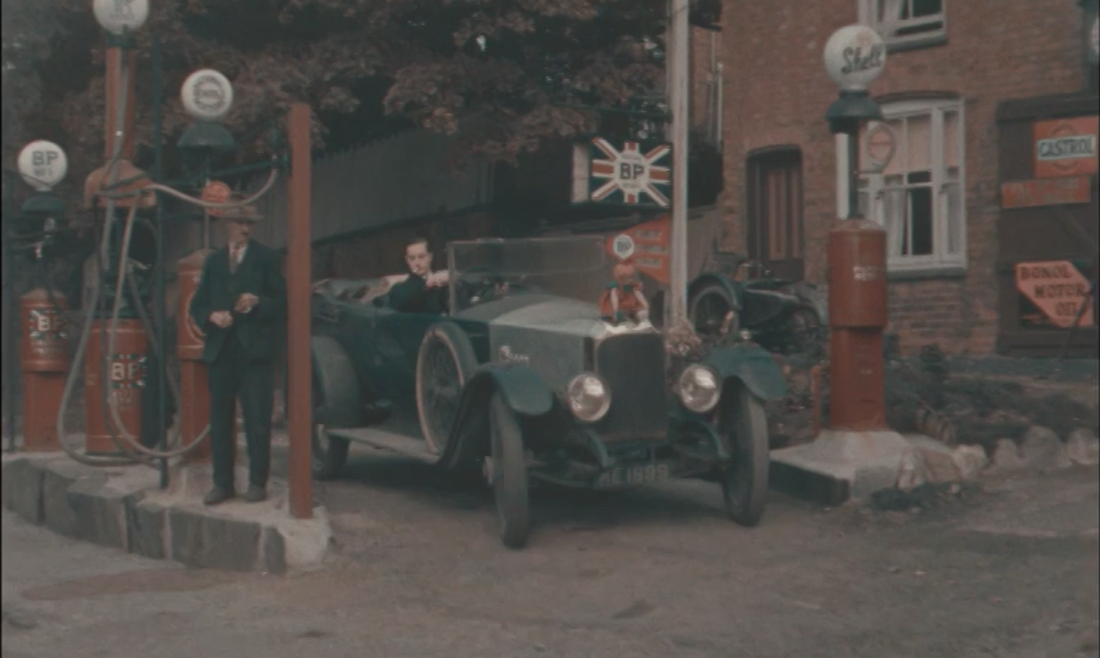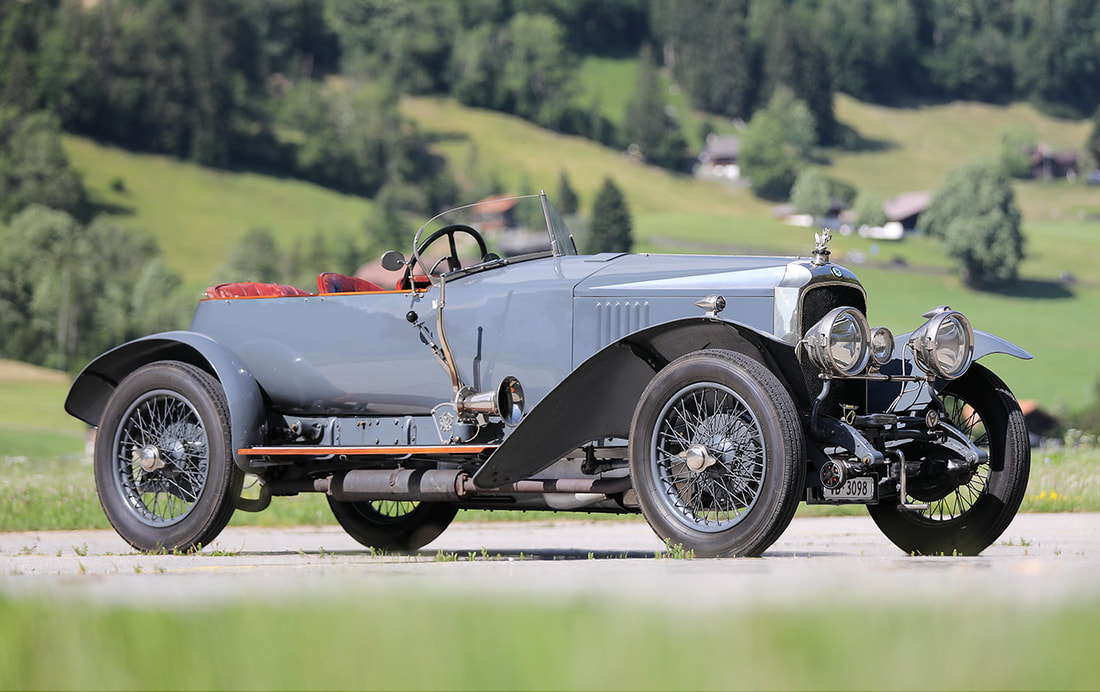The Blue Lake car - OE297
|
Story here.
|
Further reading - Nic Portway's books
A blown 30-98: Dr R. A. Beaver's racer OE264
A NEAT INSTALLATION EMPLOYING A CHAIN-DRIVEN MARSHALL CENTRIFUGAL SUPERCHARGER. From Motorsport April 1935
|
Most of us at one time or another have toyed with the idea of fitting a super-charger on a standard sports car, mostly with the idea of improving the distribution and power-output at low speeds ; for any substantial rise in maximum power output is apt to be resented by big-end bearings and other highly stressed parts. Unfortunately, the standard types of supercharger, whether of the single or the twin rotor type, are costly in the larger sizes, and are not easily accommodated under the bonnet of the average car, while the supercharging effect is more than is really required in the case which we are considering.
An interesting solution of the problem has been arrived at by Dr. R. A. Beaver, whose 30-98 Vauxhall has put many younger vehicles to shame on the Brooklands Mountain Circuit during last season. The engine had already been brought to the maximum efficiency obtainable on Ethyl, and develops some 115 h.p. and reaches something near the hundred mark in the short run from the Members Bridge to the Vickers Sheds. The next stage was either to raise the compression, which would have made the car unsuitable for road use, or to use a supercharger. Dr. Beaver decided in favour of the latter plan and obtained one of the new Typhoon centrifugal blowers made by Marshall Superchargers Ltd., which cost £9 10s. Od and blow at 11 lbs. at 5,00C r.p.m. The Vauxhall runs up to about 4,200 r.p.in. and the blower runs at 2* times engine speed. At maximum revs a supercharge pressure of about 3 lbs. is expected, while the horse-power should be in the neighbourhood of 150. The blower is only four inches deep, and so it was found possible to find room for it between the radiator and the front of the engine. It is supported on a cage-like structure of steel rods, bolted on to the fan mounting, and the water pump is now accommodated inside the cage and driven from the spindle of the supercharger. The latter is driven by roller chain from a sprocket mounted on the fan-belt drive-shaft, and runs at just over twice engine speed. |
The original induction pipe is used, but in an inverted position. One of the greatest problems was to find a suitable carburettor, since the aeroplane-type vertical Zenith could not be adapted to the horizontal intake of the blower, but in the end a horizontal R.A.G. has been pressed into service. Unfortunately, the job was not completed until just before before the first Brooklands Meeting, so it will probably not be possible to get the job completely ”au point” before its first public appearance. A remarkable thing about this ten-year old car, with its 4 litre engine, is that its total weight is only 26 cwts., comparing favourably with many of its contemporaries of half the capacity.
The installation of the supercharger was carried out by Messrs. West and Chittendon of 306A, Walworth Road, S.E. 17, who, it will be remembered, also constructed the interesting Lambda Dilambda combination mentioned in these pages last year. |
Vauxhall Motors' collection of historic cars
By Bill Boddy. From Motor Sport magazine August 1965: link here
Anglo-American Vintage Car Rally 1954
Vauxhall Prince Henry C119 @ 3.22, Vauxhall 30-98 E226 @ 9.44, Goodwood @ 11.40. Blink and you'll miss them!
The Vauxhall A-D Register
Friese-Greene film "The Open Road" (featuring a Vauxhall 23-60 OD)
The Open Road is Claude Friese-Greene's film of his 1920s road trip from Land's End to John o' Groats. It was originally filmed using the Spectrum Colour Film process. The British Film Institute has used computer processing of the images to minimise the red and green fringes around rapidly moving objects. Watch it here (65 mins).
In 2006, the BBC ran a series of programmes called 'The Lost World of Friese-Greene'. The series, presented by Dan Cruickshank, included The Open Road. The series utilised a surviving D type, D3373. Dan Cruikshank found the D type gearbox impossible to master and most of the driving shots were apparently shot with him sitting in the car on a trailer!
In 2006, the BBC ran a series of programmes called 'The Lost World of Friese-Greene'. The series, presented by Dan Cruickshank, included The Open Road. The series utilised a surviving D type, D3373. Dan Cruikshank found the D type gearbox impossible to master and most of the driving shots were apparently shot with him sitting in the car on a trailer!
OE168 in Kenya
Scroll down here for some history of OE168, ex Anthony Heal





